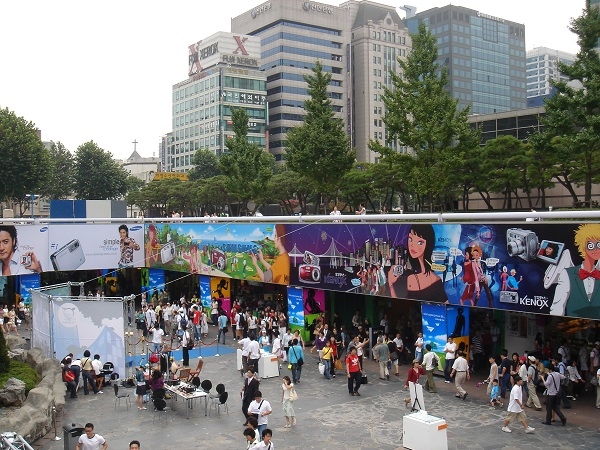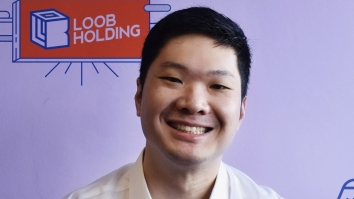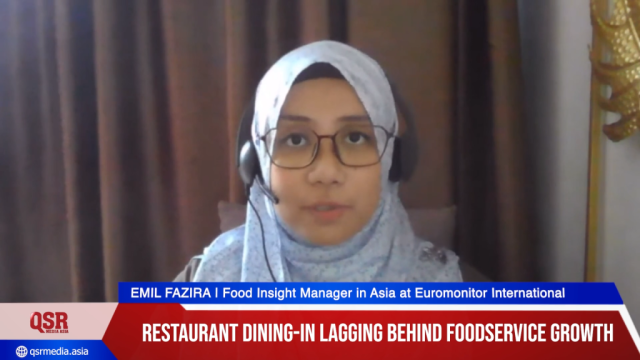
Euromonitor: South Korea sets the standard for global solo dining trends
The international research firm explores the growing trend of solo dining and its prevalence in South Korea.
Driven by a sudden rise in so-called “hon-bap people,” a Korean buzzword describing people that opt to dine alone (hon-alone, bap-meal), foodservice operators in South Korea are adopting formats and menu offerings that better accommodate this increasingly important consumer group and to drive sales. Dining alone has not only become socially acceptable in South Korea, it is almost fashionable, and as Seoul is an incubator for trends that resonate around East Asia—and even further afield—it is entirely plausible that solo dining could become trendy, or at least more common, in the region and elsewhere.
This growing demand for solo dining formats is not exclusive to South Korea, however. In other developed markets, business travellers continue to offer demand for solo dining options in transit, and recently, millennials have become more willing to experiment with new foodservice concepts, even if they have to go it alone. As dining alone becomes more acceptable in developed markets, formats that manage to balance both convenience and quality will be best placed to attract this new set of consumers. As evidence, in South Korea, convenience stores that have adopted foodservice elements such as bakery and café concepts, as well as by offering specifically-designed, nutritious box meals and tech-friendly in-store dining areas are thriving with local hon-bap consumers that need a quick, yet substantial meal.
Fast food formats are naturally suited to attract solo diners as well, and as a category, grew 6% in 2015, outpacing full-service restaurants and cafés/bars in South Korea. In other words, formats that attract consumers primarily out of convenience are already well-suited for solo diners, but those formats that also offer higher quality, more nutritiously complete meals, as well as a more accommodating in-store experience, will be best suited. The reality of today's faster-paced, increasingly urbanised lives has enabled consumers to adopt more independent lifestyles, and if the South Korean market is any indicator, which it so often is, more consumer foodservice markets will be sprouting suitable dining options for an increasingly global hon-bap consumer.
HON-BAP CONSUMERS IN SOUTH KOREA
In no other market is solo dining more prevalent than in South Korea. A rapidly declining birth rate has put stress on an already notoriously overworked population, as South Koreans work longer hours than workers in most other developed countries, according to the Organisation for Economic Co-operation and Development. Pressures at work have resulted in delayed marriage, an increased divorce rate, and generally less time to socialise. Consequently, more than one quarter of all households in South Korea housed only one person in 2015, according to government statistics.
Further complicating matters, consumers are finding it more difficult to eat well, as long working hours have left little time to prepare proper, nutritious meals at home. As a result, more consumers are opting to find a quick and convenient way to dine out, often alone, while still getting a well-balanced and tasty meal. Driven by this demographical shift, hon-bap consumers, therefore, have essentially created a demand for better solo-dining options, and foodservice operators have adapted in order to target this new potential consumer base. Full-service restaurants, for example, have modified menu offerings to include more cost-effective meal combinations that feature smaller, but more numerous, plates to offer solo diners the best balance of variety and nutrition.
Shabu Boat, for example, targets solo diners with a format that typically attracts large groups of people, modified for one. Shabu Boat is the latest spin-off brand of Chaesundang, a popular chain specialising in shabu shabu, a Japanese hotpot-style dish of thinly sliced meat boiled in water with vegetables, then dipped in sauce. The restaurant has incorporated smaller tables and bar-style seating with smaller pots for individual food preparation, as well as a centralised open bar of fresh ingredients. Shabu Boat, therefore, accommodates diners that want to enjoy the full trappings of the shabu shabu experience, for one.
Another effect of the pervasiveness of independent lifestyles is an increased intimacy with technology that allows consumers to feel socially connected, and consequently, less lonely when dining out by themselves. Restaurants, therefore, are increasingly offering ways to include tech-friendly elements to the dining experience such as free Wi-Fi, outlets for charging devices at each table, and tablets and a variety of interactive displays to keep diners “connected”. Tech-enabled restaurants allow solo diners to socialise online if they choose to, or they simply provide a place where they can eat and unwind with quick access to online games, television programming, or other forms of digital distraction.
Hon-bap consumers, therefore, are particularly attracted to restaurants specifically designed to accommodate solo diners because they are a great way to unwind, socialise online, and enjoy a better and more nutritious meal than they might have otherwise had at home, all at the same time. As more consumers choose to dine alone, either out of necessity, because it's trendy, or simply because they enjoy it, foodservice operators in South Korea have found ways to accommodate them, and even actions as small as modifying menus have gone a long way to attract new customers.
SOLO DINING IS GROWING ELSEWHERE AS WELL
Solo dining might not yet be considered trendy or fashionable in other developed markets, but it seems to be on the rise nonetheless. According to a 2015 survey from OpenTable, an online restaurant reservation service, reservations for parties of one have increased 62% in the US, the fastest growing segment of any party-size. This is indicative of a larger shift in consumer eating habits in developed markets. Families that have traditionally taken the time to eat meals together are finding it more difficult to do so, and it is increasingly common for working professionals to take meals alone, choosing to eat at their desks to save time. Consumers in developed markets are leading increasingly fast-paced and independent lifestyles, and so eating on-the-go and eating alone is becoming more routine. Dining alone doesn't have the same stigma that it once had.
While consumers have become more accustomed to eating alone, traditionally, much of the actual demand for solo dining in developed markets was due to the increasing prevalence of business travel. This has prompted foodservice operators involved in travel and lodging to cater to these transient consumers. The Atwood Restaurant in the Burnham Hotel in Chicago recently blended its bar into the hotel lobby to specifically attract solo diners, while Metropolitan by Como in Miami Beach offers a specific menu-for-one and complimentary access to PressReader, a mobile platform that offers an array of digital magazines and newspapers for solo diners to peruse while they dine, according to the New York Times.
A more modern demand, however, is driven by millennials who in general are eager for new experiences which so often revolve around food. With access to higher amounts of disposable income, millennials in developed markets are willing to trade up in order to experience these new and exciting foodservice concepts, and the independence that they have become accustomed to means that more consumers are willing to experience these concepts on their own. Millennials are not always very alone, however, as an increase in communal dining concepts has helped assuage the awkwardness that some solo diners might feel, and sharing these foodservice experiences across social media platforms is so often a part of the experience, providing solo diners with a potentially greater sense of community and belonging.
While some foodservice concepts in developed markets outside South Korea have indeed tapped into the demand for solo dining occasions, wide-scale format adaptation to better cater to the greater, global hon-bap consumer is still largely limited to a subset of niche restaurants in large urban areas and foodservice outlets through travel and lodging. Modifications, such as those that have been made to foodservice formats in South Korea, are entirely manageable in other markets where demand is increasing. Hon-bap might be a South Korean concept, but hon-bap lifestyles are increasingly common in developed markets, and foodservice operators should look to South Korea as a model for how best to incorporate better foodservice options for solo diners.






























